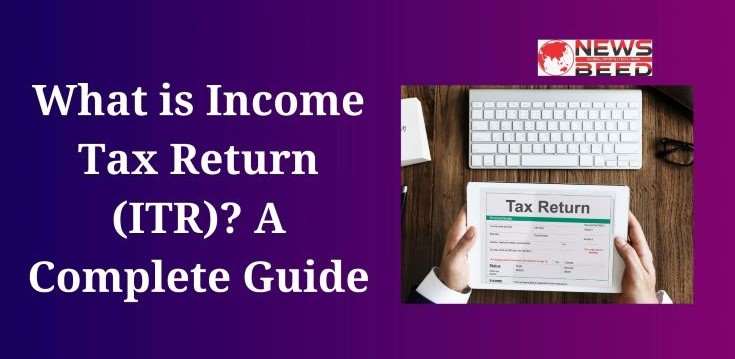An income tax return (ITR) is a form or forms filed with a tax authority that reports income, expenses, and other pertinent tax information. Tax returns allow taxpayers to calculate their tax liability, schedule tax payments, or request refunds for the overpayment of taxes. In most countries, tax returns must be filed annually for an individual or business with reportable income, including wages, interest, dividends, capital gains, or other profits.
Table of Contents
ToggleUnderstanding Income Tax Return
The process of filing an income tax return varies in different countries. However, the primary purpose remains the same: it’s a way to report income, calculate taxes owed to the government, and ensure that taxes are paid correctly and on time. Filing an income tax return has several objectives and benefits:
- Legal Obligation: In many jurisdictions, filing an income tax return is a legal requirement for individuals and entities that have earned income above a certain threshold in a financial year. Failure to file a tax return may result in penalties and interest on taxes due.
- Documentation: An income tax return serves as a vital financial document, detailing an individual’s or a business’s financial transactions. It provides a comprehensive overview of income, deductions, and taxes paid over the fiscal year.
- Tax Calculation: It helps in calculating the total tax liability based on the income earned and deductions applicable under various sections of the tax laws. This calculation ensures that taxpayers pay the correct amount of tax.
- Claiming Refund: If too much tax has been paid during the year, either through withholding or estimated tax payments, filing a tax return allows taxpayers to claim a refund.
- Carrying Forward Losses: Tax returns allow individuals and businesses to report losses that can be carried forward to subsequent years to reduce taxable income, subject to the provisions of the tax laws.
- Support for Financial Applications: Tax returns are often required when applying for loans, visas, or government assistance programs. They serve as proof of income and tax compliance.
- Adjustment of Deductions and Credits: Tax returns provide an opportunity to claim various deductions and credits available under tax laws, which can significantly reduce the overall tax liability.
Components of an Income Tax Return
An income tax return typically includes the following components:
- Personal Information: Name, address, Social Security number (or equivalent), and other identifying information.
- Income Statements: Details of income from various sources, including employment, business, investments, and other sources.
- Deductions and Exemptions: Information on eligible deductions (e.g., charitable contributions, mortgage interest) and exemptions claimed to reduce taxable income.
- Tax Credits: Details of applicable tax credits that directly reduce the amount of tax owed.
- Tax Calculation: Computation of total tax liability after accounting for deductions, exemptions, and credits.
- Payment Information: Details of taxes already paid through withholding from salaries or estimated tax payments.
Filing Process
The process of filing an income tax return can be summarized in the following steps:
- Collecting Documents: Gather all necessary documentation, including income statements, receipts for deductions and credits, and prior year’s tax return.
- Completing the Tax Return: Fill out the tax return form, either manually or using tax software, ensuring that all income is reported and deductions and credits are accurately claimed.
- Submitting the Return: Submit the completed tax return to the tax authority, either electronically or by mail, by the designated due date.
- Paying Taxes Owed or Receiving a Refund: If the return shows that additional taxes are owed, arrange for payment. If a refund is due, it will be processed by the tax authority.
Types of ITR Forms
Income Tax Return (ITR) forms are the means by which taxpayers communicate their income details and tax payable to the Income Tax Department of India. The Central Board of Direct Taxes (CBDT) specifies various forms for individuals and businesses based on the nature and amount of income, the source of income, and other factors. Understanding these forms is crucial for taxpayers to comply with tax laws and avoid penalties. Here’s a detailed overview of the primary ITR forms, tailored to provide a comprehensive understanding within the 1200-word limit.
ITR-1 (SAHAJ)
Applicability: This form is for resident individuals whose total income includes:
- Income from Salary/Pension
- Income from One House Property (excluding cases where loss is brought forward from previous years)
- Income from Other Sources (excluding winning from lottery and income from race horses)
Conditions: The total income should be up to Rs 50 lakh.
Exclusions: Individuals who are either directors in a company or have invested in unlisted equity shares cannot use this form.
ITR-2
Applicability: This is for individuals and HUFs not carrying out business or professional activities under any proprietorship.
Includes:
- Income from Salary/Pension
- Income from House Property
- Income from Capital Gains
- Income from Other Sources including winnings from lottery and income from race horses
- Foreign Assets/Foreign Income
- Agricultural income more than Rs 5,000
Exclusions: Not applicable for individuals who have income from business or profession.
ITR-3
Applicability: This form is for individuals and HUFs having income from a proprietary business or profession.
Includes:
- Income from Proprietary Business or Profession
- Income from Salaries
- Income from House Property
- Income from Capital Gains
- Income from Other Sources
Special Consideration: This form also caters to those having income from the speculative business, specified professions, and income from maintaining and owning race horses.
ITR-4 (SUGAM)
Applicability: This is for presumptive income from Business & Profession.
Conditions: Individuals, HUFs, and Partnership Firms (other than LLPs) which have:
- Presumptive income from business & profession
- Total income up to Rs 50 lakh
Exclusions: Not for an individual who is either a director in a company or has invested in unlisted equity shares.
ITR-5
Applicability: This form is for Firms, LLPs, AOPs (Association of Persons), BOIs (Body of Individuals), Artificial Juridical Person (AJP), Estate of deceased, Estate of insolvent, Business trust and investment fund.
Includes: It covers the whole spectrum of income and is designed to accommodate the complex structures of these entities.
ITR-6
Applicability: For Companies other than those claiming exemption under section 11 (Income from property held for charitable or religious purposes).
Includes: It’s designed to capture details of income from business or profession and other sources.
Exclusions: This does not apply to companies claiming exemption under section 11.
ITR-7
Applicability: For persons including companies required to furnish return under sections 139(4A), 139(4B), 139(4C), and 139(4D).
Includes: This includes trusts, political parties, institutions, colleges, and entities who receive income from property held under trust for charitable or religious purposes, scientific research, news agency, hospital, university, or other institutions.
Selection Criteria and Guidelines
- Income Source and Amount: Your sources of income and the total amount of income determine the ITR form you should use. For instance, ITR-1 is designed for salaried individuals with income up to Rs 50 lakh, while ITR-3 is for individuals with income from a business or profession.
- Residential Status: Some forms, like ITR-1, are only applicable to resident individuals.
- Ownership Structure: The structure of ownership, such as individual, HUF, firm, or company, influences the choice of ITR form.
- Presumptive Income Schemes: Taxpayers opting for presumptive taxation schemes under Sections 44AD, 44ADA, or 44AE of the Income Tax Act will use ITR-4.
- Foreign Income/Assets: Taxpayers with foreign income or assets need to use forms like ITR-2 or ITR-3, which have provisions for declaring such income.
- Exemptions and Deductions: The eligibility for exemptions and deductions might affect the form selection, especially for entities like trusts or non-profit organizations, which would use ITR-7.
You May Also Read:
What is Digital Marketing in Hindi
SEO Interview Questions and Answers
What is Affiliate Marketing Meaning
Importance of Compliance
Compliance with tax filing and payment obligations is crucial. Failure to file an income tax return or pay taxes owed can result in penalties, interest charges, and legal consequences. Moreover, tax compliance supports the provision of public services and infrastructure, contributing to the overall development and welfare of society.
Conclusion
Filing an income tax return is an essential aspect of financial responsibility for individuals and businesses. It not only fulfills a legal obligation but also offers opportunities to minimize tax liabilities through deductions and credits. By accurately reporting income and taking advantage of the provisions in tax laws, taxpayers can ensure compliance, avoid penalties, and optimize their financial planning. Understanding the components, importance, and process of filing an income tax return is fundamental to navigating the complexities of tax laws and maintaining good standing with tax authorities.




